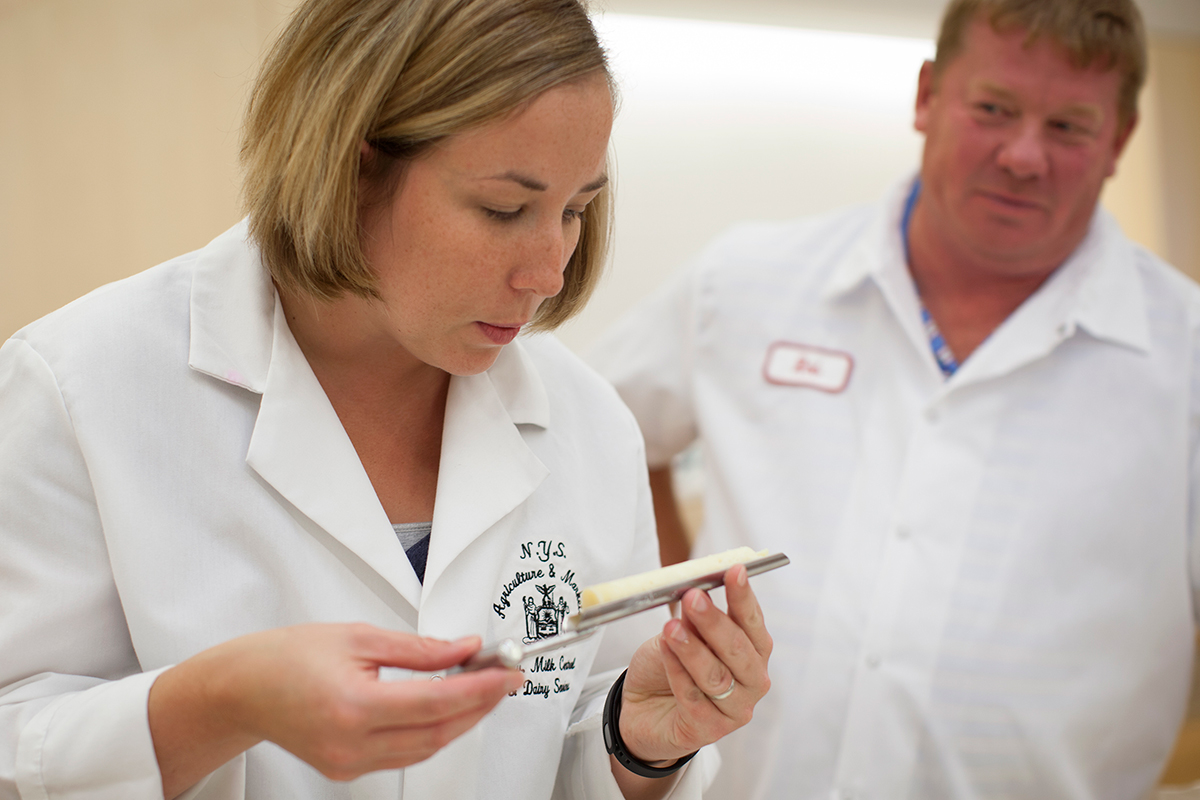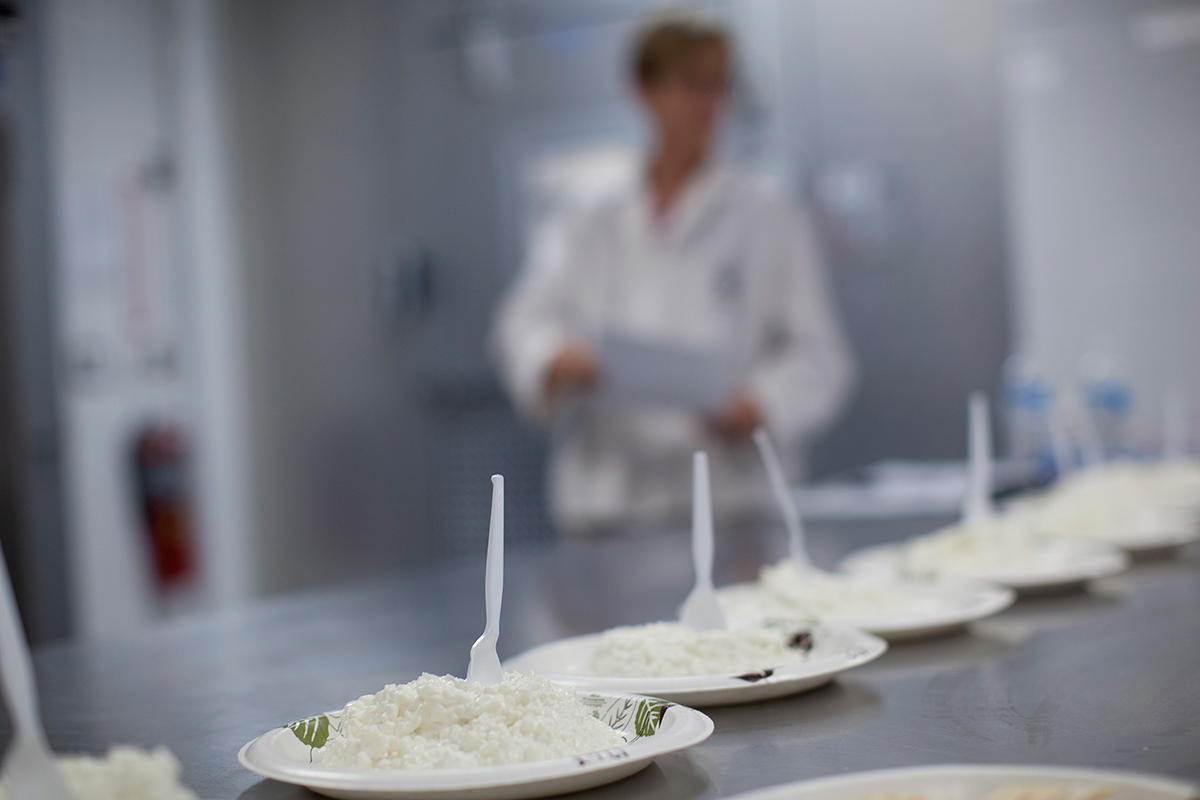Beyond blue ribbons, cheese buoys New York economy
By Blaine Friedlander


For three days in Ithaca in August, 10 cheese judges gathered at Cornell’s Stocking Hall to discern, savor and taste 230 cheeses to determine New York’s best for 2015.
In a thrill for taste buds, the judges encountered cheddars, mozzarella, farmstead artisan, ricotta, smoky provolone and 15 other cheeses. The results will be announced at the New York State Fair on Dairy Day, Aug. 31.
Judges surround a table examining one category at a time, including a new one added in 2014 – artisanal cheeses from New York’s farmsteads, which feature earthy and subtle tones derived from sheep, goat and cow milk. They compliment some cheeses and offer suggestions for next time.
Beyond taste and aroma, David Bandler, Cornell professor emeritus of food science, explains you can actually see good cheese. In the hard cheese categories, for example, judges use a coring tool to pull cigar-size pieces from the wheels. Bandler points out the good cores from the bad, explaining: “Look at the way the plug comes out,” showing faint characteristics like pinholes and free fat. “When you go to taste it, those characteristics get confirmed,” said Bandler.
Reading the official score sheets reminds you of a romp through a thesaurus. Cheese descriptions are crammed with adjectives: fruity, flat, sharp, fermented, clean, yeasty, mottled, curdled, bitter and cracked.
Impartiality remains a key component to judging, said Rob Ralyea, Cornell senior extension associate. While consumers sometimes enjoy acidic or pungent notes in some cheeses, judges “must put their own personal likes aside,” he explains. For cheese judging, it’s all about the flavors for which cheese makers strive. “For example, if you’re making Pepperjack cheese – and you put in too much spice so that the cheese is overwhelmed – you’ve missed your mark,” Ralyea said.
The artisan cheese category provided new, creative concoctions: Some mold-ripened, soft-cheeses were “washed” with beers, liqueurs or herbs. “This one is very pretty,” said one judge. “This one is ‘goo-ing’ all over the place,” said another judge, discussing a room temperature soft cheese, “but it looks like a delicious goo.”
While cheese tastes good, it’s also an important segment of the state’s economy. In 2014, New York’s dairy farmers produced 13.7 billion pounds of milk, according to New York State Department of Agriculture and Markets, and 4.3 billion pounds used to make 784.6 million pounds of cheese – excluding cottage cheese.
The wholesale value of cheese in New York is estimated at $1.7 billion for 2014 – a year of record high prices; approximately 3 billion pounds of milk was shipped to out-of-state plants, mainly in New England, New Jersey and Pennsylvania.
Chip Lindberg, chief dairy inspector for the New York State Department of Agriculture and Markets, explained how his agency and Cornell’s Department of Food Science, work in a complementary way to maintain food safety, improve quality and foster a blue-chip environment for ever-better dairy products.
Judges included Cornell’s Bandler, Ralyea and Steve Murphy, senior extension associate; John Bartell, Alfred State College professor emeritus; and Dave Buteyn, of Vivolac Cultures. Including Lindberg, other judges from New York State Department of Agriculture and Markets were dairy products specialists Vickie Pedersen, Heather Spraker and Amanda Zick; and Eric Dutton, former chief dairy inspector.
Media Contact
Get Cornell news delivered right to your inbox.
Subscribe